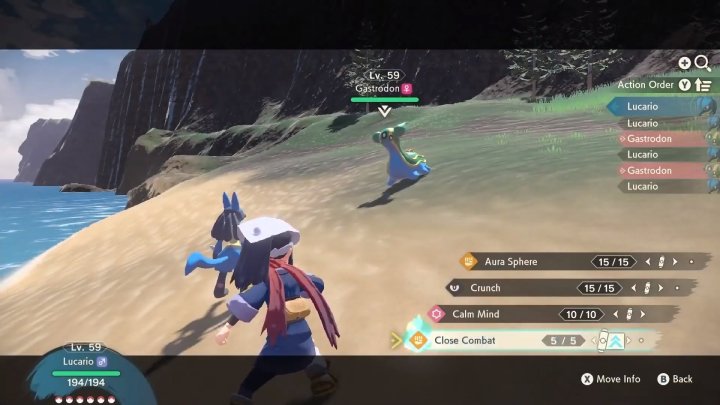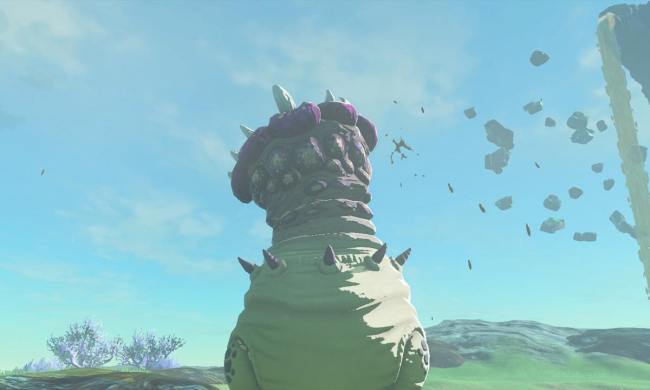At this point, the Pokémon Go phenomenon feels like it happened two alternate universes ago. Remember those euphoric few months in 2016 when everyone was constantly outside and congregating with total strangers? The mobile game has been much more than a flash in the pan for Nintendo. It renewed mainstream interest in the franchise, maintaining its cross-generational dominance.
Pokémon Go’s success has created some complications for the franchise, though. It’s a unique experience built for mobile, one that hardly resembles the traditional RPG setup of the mainline games. Finding a way to integrate its hooks into fully fleshed-out Switch games is no easy task, making it hard to fully capitalize on the momentum.
With Pokémon Legends: Arceus, Game Freak has finally cracked the case. By putting an emphasis on “research,” Nintendo’s latest game takes all the right lessons from Pokémon Go without throwing the franchise’s strengths out the window.
Study session
When Pokémon Go first launched, it was a better social experiment than a video game. The gameplay was even more of a grind than its RPG counterparts. Players simply caught as many Pokémon as possible while walking around. Evolving a monster meant catching the same creature over and over again to stock up on candies. It wasn’t terribly fun; it was just a good excuse to get outside.

The hit game has added more mechanics since then, which have made it a little less repetitive. Most notably, it now includes field research. The system works the same way as any mobile challenge system, giving players monthly tasks to complete. Players can get rewards for anything from hatching eggs, to throwing curveballs, to simply walking.
The system helps pave over some of Pokémon Go’s problems, but it’s also an ingenious solution for the series at large. Mainline Pokémon games include a myriad of systems for players to engage with and it can be a lot to remember them all. It’s much easier to catch one monster of every kind, raise your six favorites, and beat the main story without ever hatching an egg or going to the Battle Tower.
Pokémon Legends: Arceus understands how checklists can help players focus their attention when there’s too much to do. Every time players encounter a Pokémon, they’re given a set of research tasks that have clear goals and milestones. Players will get research points for catching and defeating monsters, but there are more specific tasks too. Buizel’s task list tells players to defeat it using electric moves as a subtle way to teach and ingrain type advantages. It’ll also shell out points for watching it use Aqua Jet, enticing players to add it to their party and try the move in battle.

Each monster is a little study session that deepens a trainer’s understanding of the game. The more boxes they check off, the more they build a mental Pokédex. Those guide rails make the open-world game less overwhelming and imbue it with a more fulfilling sense of progress.
So far, it’s the best idea we’ve seen come to a Pokémon game post-Go. Game Freak previously tried to build on the mobile game’s success with Pokémon Let’s Go Pikachu and Eevee, but the ideas it borrowed were more surface level. It simply streamlined catching by having players throw a ball instead of battling, just like in Go. That idea made the game easier for kids, but wasn’t one that really got the mobile game’s strengths.
Pokémon Legends: Arceus is the closest Game Freak has come yet to understanding what makes Go tick. Sure, it doesn’t have the same social component nor the AR integration that initially drew players in, but those were never going to work in a console game. Instead, Arceus understands what’s really appealing about Go: it makes players feel like Professor Oak instead of Ash Ketchum. It’s about studying behaviors and staking out habitats instead of fighting Team Rocket and earning shiny badges. The research system reinforces that distinction in a clever way.
I hope to see those learnings make it into the next mainline RPG. While I’ve loved my 25 years spent as a trainer, I’m ready to become the David Attenborough of the Pokémon universe.
Pokémon Legends: Arceus is available now on Nintendo Switch.



